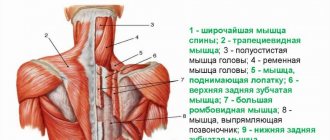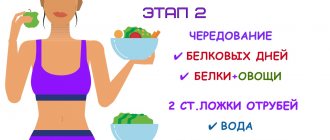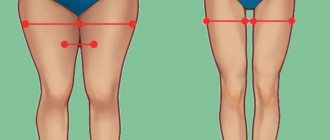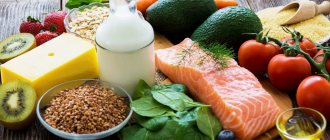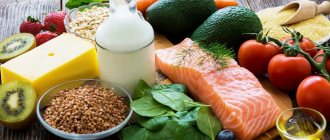Vegetarianism as a way of eating and even a way of life is gaining more and more fans today. It no longer surprises anyone if in a group at the table someone abstains from meat or dairy products, or if one of your guests prefers salad to steak. We are increasingly seeing vegan-friendly dishes on the menus of cafes and restaurants; store shelves are rushing to offer a wide selection of products and goods that do not contain animal ingredients.
However, while vegetarianism has long been a trend in the West, in our country people have very vague ideas about what exactly a vegetarian diet consists of, and treat this food system with suspicion and distrust. But this is one of the most ancient types of food, which is many thousands of years old. Such ignorance gives rise to a lot of myths that spread across the Internet and continue to mislead people about the benefits and harms of vegetarianism.
We all periodically come across halivars online between “meat-eaters” and vegetarians, accusing each other of all mortal sins. If you are a beginner vegetarian or are just about to try this type of diet, these online showdowns will confuse you even more. I often see that many, having become vegetarians, go to great lengths without fully thinking through their daily menu. But such frivolity can undermine a person’s health – sometimes irreversibly. Therefore, it is important to understand the following questions: what does vegetarianism include and what types does it come in? How to switch to a vegetarian diet correctly? How to get all the necessary substances with such a diet (and not die of hunger)? And the most interesting thing: WHERE DO VEGETARIANS GET PROTEIN? Let's figure it out.
Types of vegetarianism
Vegetarianism is a food system in which all products of animal origin (meat, fish, chicken, seafood, etc.) are excluded from consumption. A similar practice of conscious dietary restriction can be found in the history of many peoples, but the term “vegetarianism” itself was officially assigned to this movement on September 30, 1847, when the Vegetarian Society of the United Kingdom was founded in Ramsgate in England. It still exists today, famous members of this Society are Mahatma Gandhi, J. Bernard Shaw, Paul, Linda and Stella McCartney. To name a person who practices this type of nutrition, the English term “vegetarian” was chosen, which, according to some sources, comes from the Latin “vegetus” - “vigorous”, “fresh”, “alive”, and according to others - from the English word vegetable (vegetable).
Vegetarianism can be strict - then it is called veganism or veganism . With this type of diet, absolutely everything that contains animal components is excluded: in addition to meat, poultry, fish and seafood, eggs, all dairy products and honey are not consumed. Veganism is more than just nutrition, it is a way of life, the main principle of which is the absence of any exploitation of animals for the sake of humans (even if the animal is not killed). Therefore, vegans do not wear leather, wool and fur products and shoes made from these materials, and do not consume products tested on animals, as well as substances such as glycerin, gelatin, etc.
Other types of vegetarianism are much less ascetic: ovo-, lacto-lacto-ovo-vegetarianism. With lacto-ovo vegetarianism , eggs and dairy products remain in the diet; Ovo-vegetarianism excludes dairy products, and lacto-vegetarianism , accordingly, excludes eggs. In all three systems, honey is usually used. There is also pescatarianism , when fish and seafood are left in the diet, and only warm-blooded meat is limited.
There are several more extreme options for veganism: raw food diet and fruitarianism , which we will not consider in this article.
I will only say that I cannot call these types of nutrition complete and healthy and I advise you to treat them very carefully, as they can cause serious harm to the body.
Types of veganism
Separately, it is worth dwelling on the classifications, since many do not understand, for example, how vegetarianism differs from a raw food diet. You need to know these nuances so that when you switch to one of these systems, you do not violate its boundaries and correctly self-determinate.
In total, 4 currents can be distinguished:
- Traditional vegans do not eat meat, milk, eggs, fish and honey, leaning on cereals, grains, nuts, vegetables, herbs, berries, and fruits.
- Raw food diet - eating only those products of plant origin that have not been processed by humans in any way.
- Macrobiotics - avoidance of sugar (bone charcoal is used to purify sugar obtained from beets) and oils.
- Fruitarians eat only fruit (the classic representative of this group is Hollywood actor Clint Eastwood).
Vegetarians, vegans and raw foodists are essentially similar (they are united by the rejection of animal products), but each has its own nuances (the differences relate to the list of permitted and prohibited products and methods of processing them).
Reasons for transition and statistics
People become vegetarians for various reasons, the main ones being:
- ethical (the principle of non-violence (Sanskrit “ahimsa”), out of compassion for other living beings);
- religious (some religions, for example, Hinduism, prohibit the consumption of meat; also, in many religions there are fasts (for example, in Christianity) - temporary refusal of certain foods);
— environmental (there is evidence that about 30% of greenhouse gases on the planet are formed due to the activities of livestock farms and the infrastructure that serves them; in addition, tropical forests, the “lungs” of our planet, are subjected to severe deforestation, and wastewater from slaughterhouses pollutes rivers and soil);
- economic (approximately 40% of all grown grain goes to feed livestock bred for slaughter, and reducing this figure by at least half can solve the problem of hunger on earth; also, for the purposes of livestock farming, a huge amount of water is spent - one of the most valuable resources on the planet );
- medical (a vegetarian diet can reduce the risk of cardiovascular diseases, some types of cancer, gastrointestinal diseases, etc.).
Vegetarianism is most common in India (about 84% of the population) and Taiwan (14%). From 5 to 10% of vegetarians are found in Brazil, Israel, Italy, Germany, Great Britain, 9% in Sweden, 6% in the Netherlands and Norway, 4% in the USA, less than 5% in Spain, France, Australia, New Zealand. Zealand, Poland and the Czech Republic. In Russia in 2013, there were about 4% of convinced vegetarians (according to a survey conducted by the Superjob portal), and 55% of respondents stated their approval of the position of vegetarianism.
There are certain difficulties that people face when switching to a vegetarian diet. Let's look at them in more detail.
Protein deficiency
The very first question a newly-made vegetarian hears is: “Where do you get your protein?” With a standard diet, we get approximately 38-33% protein per day from meat and meat products. With a vegetarian diet, these percentages must be properly replenished from plant and/or dairy foods and eggs. Despite the fact that there is a lot of protein in cereals and legumes, it is not easy for our body to absorb. Below I will provide a table of the content and digestibility of protein from various foods.
Pay attention to the following columns:
— the amount of protein in grams per 100 g of product (this way you can estimate how much protein you will eat from a serving of a protein product);
- digestibility in % (shows how efficiently the average person digests this or that type of protein - here you need to make allowances for your own body, because we are all unique);
- biological value (BC - the percentage of utilization of protein entering the body. Whey protein and eggs are utilized by the body by 100%, milk - by 93%, rice by 86%, casein, fish and beef - by 75%, corn - by 72%, grain gluten – by 44%);
- protein absorption coefficient PDCAAS (or also called adjusted amino acid score. This indicator includes three main parameters: the content of essential amino acids, protein digestibility and the ability to supply essential amino acids in the quantity required for a person. If it is equal to 1, then this is the “best " according to these three indicators protein).
We see that the protein with the highest absorption rate is eggs, egg powder, whey and dairy products (milk, kefir, cottage cheese, cheese). If we exclude powdered eggs and whey from the list, which we don’t eat in normal life, then the most effective foods for protein will be cottage cheese, cheese and eggs. Of the plant products, the most valuable in terms of protein intake and processing by the body will be soybeans (the absolute leader), beans, peas, buckwheat, rye and corn. Therefore, it is better to focus on these foods in your diet.
Thus, the protein diet for a girl weighing 60 kg will be something like this:
- 2 eggs (approximately 90 g serving = 11.43 g protein)
- glass of kefir (approximately 200 g = 5.6 g protein)
- 150 g buckwheat (= 18.9 g protein)
- 2 slices rye-wheat whole grain bread (about 50 g = 5.45 g protein)
- 100 g cottage cheese (approximately 17 g protein)
One of the difficulties of a purely plant-based diet (veganism) is amino acid imbalance . The fact is that plant proteins have an incomplete composition of amino acids, which significantly reduces their effectiveness. Why it is important to replenish the entire range of amino acids in your diet, I have already written here . To even out the amino acid composition, it is recommended to use several protein sources in each main meal and combine them with each other as follows:
- rice with beans or sesame seeds;
- wheat with legumes, peanuts, sesame and soy;
- legumes with corn or wheat;
- soy with rice and wheat, wheat and sesame, or peanuts and sesame;
- peanuts with sunflower seeds.
Seafood
Seaweed Salad
Seafood includes everything edible obtained from the world's oceans. However, the most “vegetarian” seafood is seaweed, which contains large amounts of vitamins, minerals and easily digestible proteins. Iodine, phosphorus, iron, magnesium, potassium, bromine, sodium - this is only a partial list of the beneficial substances they contain. The qualitative and quantitative content of macro- and microelements in seaweed resembles the composition of human blood, which also allows us to consider them as a balanced source of saturating the body with minerals and microelements.
Algae are classified as brown, red and green.
- Brown algae include wakame, limu, hijiki and kelp (seaweed), including its varieties (arame, kombu, etc.);
- Red algae are called dals, carrageenan, rhodium and porphyra (which, thanks to the Japanese, is known throughout the world as nori);
- Green algae include monostroma (aonori), spirulina, umi budo (sea grapes) and ulva (sea lettuce).
In general, if you see these names on the packaging, this is a completely vegetarian food.
Vitamin B12 deficiency
Vitamin B12 (cyanocobalamin) is not synthesized by animals or higher plants; only microorganisms are capable of producing it (for example, the microflora of our intestines). But it successfully accumulates in organs such as the liver. Vitamin B12 reserves will last a person for 3-4 years. However, its shortage may cost us dearly. Just look at how many important processes it is involved in!
Cyanocobalamin is involved in the production of leukocytes, hemoglobin and blood cells. In its absence, anemia develops. Also, it is involved in the processes of immunity formation (for example, in people with HIV, with a lack of B12, various infectious diseases develop much faster, which in turn brings AIDS closer). It is involved in the formation of the myelin sheath on nerve fibers, activating the processes of DNA and RNA synthesis, and helps carotene become retinol (vitamin A), suitable for absorption by our body. In addition, vitamin B12 is involved in the process of protein breakdown, the metabolism of proteins, fats and carbohydrates in a number of reactions, ensuring normal brain function, supporting the respiratory system and many other important functions.
As already noted, plant foods do not contain vitamin B12 in a form accessible to the human body, and its main sources are the organs and meat of animals and fish that have accumulated this vitamin during life. However, it can also be obtained from eggs and dairy products, so ovo- and dairy-vegetarians may not have to worry too much about a deficiency as long as they eat enough of these foods. And this is at least 3 mcg/day. A chicken egg per 100 g contains approximately 0.5 mcg of vitamin B12, sour cream - 0.4 mcg, Dutch cheese - 1.4 mcg. Filling the need is not easy, but it is still possible. However, if you are a vegan, you need to take vitamin complexes with sufficient cyanocobalamin content, otherwise you will not compensate for its deficiency. And what this entails – I think it’s now extremely clear.
Calcium and vitamin D deficiency
Vitamin D is involved in the metabolism of calcium and phosphorus in the body, it is important for normal carbohydrate metabolism, helps reduce body weight in obesity and improve immunity. Adequate intake of vitamin D per day is about 5 mcg. The main sources for vegetarians are eggs (2.2 mcg), sour cream and butter (0.2 mcg), cream (0.1 mcg).
Calcium is involved in the formation of bone tissue and teeth, conduction of nerve impulses, muscle contraction, the functioning of the excretory system and reproductive function, as well as a number of other important processes. An adult needs 800 - 1000 mg of calcium per day (in adolescents, pregnant and lactating women, the norm is higher).
The main sources of calcium for non-strict vegetarians are dairy products: cheese (600-1000 mg), cottage cheese (154 mg), sour cream (90-120 mg), cream (86 mg). In addition, there is a lot of calcium in dark leafy green vegetables (chinese cabbage, broccoli, kale, turnips. You can also get calcium from sesame seeds and almonds (273 mg), pistachios (250 mg), beans (150 mg) , soy and soy products (such as tofu and tempeh), chia seeds, figs, mustard, garlic, hazelnuts, oatmeal, peas, walnuts and barley, and specially fortified calcium products (such as soy yogurt, soy milk and etc.).
Iron and zinc deficiency
Iron is involved in many processes in the body, for example, it transports oxygen from the lungs to organs and tissues, is part of some enzymes, and fights oxidative stress. Zinc is part of more than 100 (!) enzymes, is involved in protein synthesis and in carbohydrate, mineral metabolism and the metabolism of vitamins A and E, in the transfer of electrons and in the functioning of the genetic apparatus, collagen synthesis and the building of immunity, sexual function and other important processes. The need for iron per day is 10-20 mg, for zinc – 10-40 mg.
The main sources of iron and zinc are animal products (meat and eggs). In plant foods, iron is found in bread, cereals, nuts and dried fruits, zinc is found in nuts, legumes (beans, peas, soybeans), pumpkin and sunflower seeds, and whole grains. Sources of iron in a vegetarian diet are usually sufficient, but its absorption is difficult due to the fact that the bioavailability of iron in plants is lower than in meat, and also because other components of the diet reduce the absorption of this microelement. For comparison: iron is absorbed from meat by approximately 20-30%, from fish by 10-15%, from eggs, corn and beans - by 3%, from soybeans - by 7%, from spinach and rice - by 1%.
In addition, the content of phytic acid, caffeine and tannins from tea and coffee, phosphates and oxalates reduces the absorption of iron and zinc by the body. Phytates are found in the shell of cereals, legumes and seeds and form insoluble complexes with iron in the body. Therefore, before cooking, it is recommended to soak grains and legumes in water (with the addition of soda or vinegar).
To increase the absorption of iron, it also makes sense to combine iron-containing foods with foods that are sources of vitamin C (berries, citrus fruits, sweet and hot peppers, zucchini, tomatoes, broccoli). But foods high in calcium, on the contrary, impair the absorption of iron.
Vitamin A deficiency
In animal products, vitamin A (retinol) is in a bioavailable form, so its absorption from these products is high. In plant foods, vitamin A is in the form of provitamins – carotene and carotenoids. Therefore, before our body can absorb vitamin A from plants, it needs to do a number of complex manipulations with it - convert it from an inactive form to an active one (including using vitamin B12). All this takes the body additional time and resources, which it may not have enough of, so vegetarians may suffer from hypovitaminosis A.
The daily requirement for vitamin A is 3300 IU (or 1000 retinol equivalents, or 1-3 mg/day). Main sources for vegetarians: wild garlic (4.2 mg per 100 g), viburnum (2.5 mg), garlic (2.4 mg), butter (0.59 mg), broccoli (0.39 mg), sour cream (0.3 mg), sweet potato or sweet potato (0.3 mg), seaweed (0.2 mg), feta cheese (0.17 mg), seaweed (0.1 mg), cottage cheese (0.08 mg).
Table
The table below clearly demonstrates the main differences between vegetarians and vegans:
For the uninitiated, vegetarian and vegan are the same thing. Actually this is not true. Vegetarianism is a generic concept, broader and includes many branches with all their predilections for fruits, milk, eggs, etc. Veganism is a specific concept, narrower, relating not only to nutrition, unlike other movements. Its adherents completely abandon products of animal origin, things made from animal raw materials.
For those who are planning to join this worldview, it is necessary to understand these basic terms and know the differences between them.
Iodine deficiency
If you exclude seafood from your diet, there is a high risk of acquiring iodine deficiency in the body. Iodine is an important trace element that is part of thyroid hormones and is involved in the development of the brain of the fetus, children and adolescents. Iodine consumption in Russia is at a very low level, so almost all of us, regardless of whether we are vegetarians or not, are catastrophically short of iodine. Meanwhile, the need for iodine in adults is 100-150 mcg/day.
In addition to fish and sea reptiles, sources of iodine are seaweed (300 mcg) and feijoa (80-350 mcg), as well as iodized salt and special dietary supplements.
It must be borne in mind that there are products that neutralize iodine (soybeans and its derivatives, cruciferous vegetables and flaxseed). Therefore, it is better not to combine them with seaweed or other sources of iodine in the same meal.
Bean sandwiches
An original, satisfying and appetizing version of breakfast sandwiches.
Ingredients:
- Beans – 1/2 cup;
- Loaf – 1 pc.;
- Vegetable oil – 2 tbsp. l.;
- Salt and pepper - to taste;
- Lemon juice – 2 tbsp. l.
Pre-soak the beans for an hour in cold water. Then boil in salted water until tender. If desired, you can add vegetables or roots to the broth for a more intense flavor. Divide roughly in half. Add pepper, lemon juice and vegetable oil to each half. Grind one half in a blender until smooth. Dry the loaf slices in a frying pan. Brush each slice with chopped beans and place the whole beans on top. A nutritious breakfast is ready!
Imbalance of Omega-3 and Omega-6 PUFAs
Since the main source of omega-3 polyunsaturated fatty acids in the body is fatty marine fish, vegetarians who exclude fish from their diet are at risk for this essential fatty acid. You can read about why it is important to maintain the proportion of omega-3 to omega-6 fatty acids here .
What can be done about this? First, rely on plant sources of omega-3 PUFAs: flax seeds, chia seeds and walnuts (although, according to some information, omega-3 from plants does not have the same biological value for our body as omega-3 from fish) . And secondly, use oils with a low amount of omega-6: olive, avocado, rapeseed, flaxseed, camelina oil, hemp oil, chia seed oil (the latter, however, I have never seen on sale).
Vegetarianism: reviews and results
Numerous reviews and opinions about why it is worth practicing vegetarian philosophy are not uncommon on the Internet. But many people practice the so-called vegetarian diet temporarily to lose weight. It is not followed constantly, but in courses - for several weeks or months. But even such periods of abstinence from meat help improve well-being and reduce weight. Those who practice such a diet write that after just a few weeks, lightness appears in the body, and extra pounds disappear.
Diet preparation
So, we have looked at the features of a vegetarian diet, and now the main question that I think you have is: how to switch to vegetarianism and how much and what foods to eat so that the diet is balanced.
When making any changes to your diet, I recommend, firstly, not to rush and think in advance about what and how you will eat . Do you have enough suitable products in your nearest stores? Are they financially accessible, is there the necessary variety and choice of quality products that you will choose to replace products from your previous “meat” diet?
Secondly, I would advise you to get examined by a doctor and find out the state of your body - is it ready for a change in diet, are there any hidden diseases that can complicate both the transition itself and your state of health. You can take a vitamin content test to understand what resources you have and what you need to focus on. Subsequently, it is better to retake this test every six months or a year to keep the situation under control.
Thirdly, you shouldn’t rush and rush headlong into a new diet. Any change in diet is stress for the body, and stress is the worst assistant in such an important task. Therefore, once you decide to radically change your diet, especially if this is not for medical reasons, think through a transition strategy, break it into phases ranging from several weeks to several months and change your diet gradually (first replace one food group, for example, red meat, legumes, then remove poultry or fish from your diet if you want to go further in this matter). There's no need to rush! Carefully monitor how your body reacts to changes and adjust if necessary. After all, you are waiting for positive changes, not health problems, right?
As with a regular diet, a vegetarian diet should be based on whole grains. They must be combined with complementary amino acid products from legumes and soybeans, nuts and seeds to compensate for the lack of protein. As always, don’t forget about vegetables – heat-treated and raw, of which there should be at least 500 g, and preferably more. We remember, however, that starchy vegetables such as potatoes, sweet potatoes, pumpkin and boiled carrots belong more to the group of grains than vegetables, since they contain a lot of starch. Fruits - whether raw or cooked - should be included in the diet on a regular basis.
Don't forget about good fats, whose sources are olive, flaxseed, rapeseed, butter, camelina oil and avocado oil, the avocado itself, nuts and seeds. If necessary, we include omega-3 supplements in the diet. If you eat eggs and dairy products, then 1 serving of eggs and 1-2 servings of dairy products should also be in your diet every day, and if not, be sure to take a dietary supplement with vitamin B12. Don't forget about such a source of vitamin D as the sun - 10-15 minutes a day spent in the sun will help us produce it. We drink enough water and, if possible, minimize coffee and black tea, as caffeine interferes with the absorption of iron and zinc. And don't forget about regular physical activity, which allows our metabolism to remain at a higher level.




